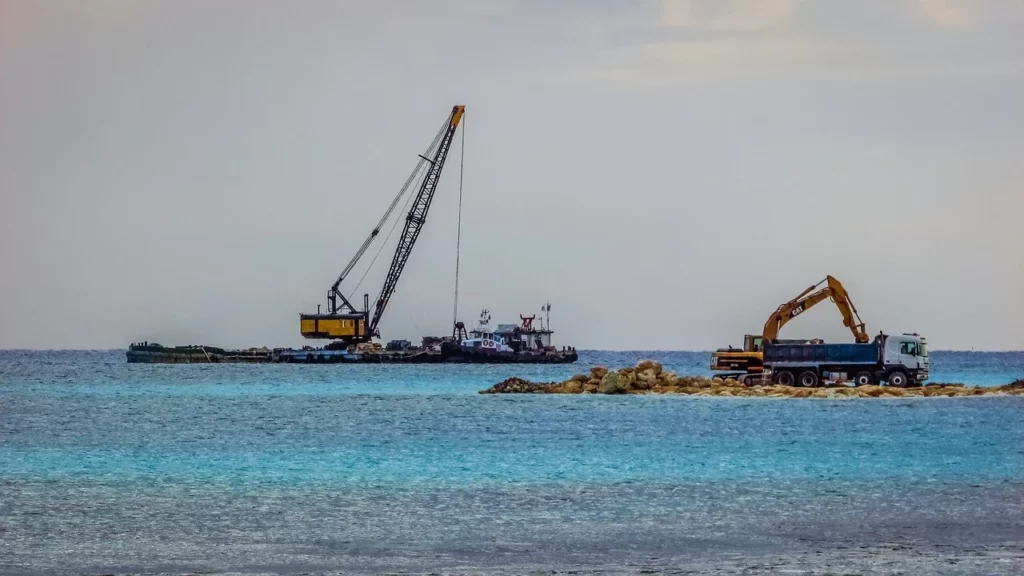Dredging techniques play a crucial role in various industries, including construction, mining, and environmental management. It involves the removal of sediments and debris from the bottom of water bodies to maintain or increase the depth of channels, harbors, and waterways. With the growing need for infrastructure development and environmental preservation, efficient dredging techniques are more critical than ever. This article explores the top dredging techniques that ensure timely project completion, cost-effectiveness, and minimal environmental impact.
1. Mechanical Dredging
Mechanical dredging is one of the most common and straightforward methods used in dredging operations. It involves the use of heavy machinery, such as backhoes, excavators, and bucket dredgers, to physically scoop up and remove sediment from the seabed or riverbed.
Key Equipment:
- Backhoes and excavators are versatile machines that can be used for dredging in shallow waters and confined spaces.
- Bucket dredgers are more specialized and are often employed in ports and harbors for large-scale sediment removal.
Advantages:
Mechanical dredging techniques are highly efficient for handling heavy and compacted materials, making it ideal for projects that require precise sediment removal. The method is also flexible, as it can be adapted to various project sizes and environments.
Case Studies:
In the expansion of a major port in Asia, mechanical dredging was chosen for its precision in removing contaminated sediments. The technique ensured that the project was completed on time while meeting strict environmental regulations, showcasing the effectiveness of efficient dredging techniques.
2. Hydraulic Dredging
Hydraulic dredging is a technique that utilizes water pressure to transport sediment from the seabed through a pipeline system to a designated disposal site. This method is particularly effective for large-scale projects that require the removal of vast amounts of material.
Key Equipment:
- Cutter suction dredgers (CSDs) are commonly used in hydraulic dredging techniques. They combine the cutting ability of mechanical dredgers with the efficiency of hydraulic transport.
- Pipeline systems play a critical role in transporting the dredged material over long distances to disposal or reclamation sites.
Advantages:
Hydraulic dredging offers high production rates, making it the preferred choice for large-scale projects. It is particularly effective in areas where the sediment is loose or semi-cohesive, such as sand, mud, or silt. Among dredging techniques, this method is known for its ability to handle substantial volumes, contributing to efficient dredging.
Case Studies:
The construction of an artificial island in the Middle East relied heavily on hydraulic dredging. The technique enabled the rapid transport of millions of cubic meters of sand, significantly reducing project timelines and demonstrating the power of advanced dredging technologies.
3. Environmental Dredging
Environmental dredging is a specialized technique designed to minimize the environmental impact of dredging activities, particularly in sensitive ecosystems. This method often involves precision dredging techniques and the use of containment systems to prevent the spread of contaminated sediments.
Key Techniques:
- Precision dredging uses GPS and sonar technologies to target specific areas, reducing the volume of sediment removed and minimizing disturbance.
- Silt curtains and closed bucket systems are employed to contain and capture sediments, preventing them from spreading to adjacent areas.
Advantages:
This technique is essential for projects in environmentally sensitive areas, such as wetlands or habitats for endangered species. It reduces ecological disruption and ensures compliance with environmental regulations, aligning with efficient dredging techniques that prioritize sustainability.
Case Studies:
In a river restoration project in North America, environmental dredging was employed to remove toxic sediments without harming the local fish population. The project not only restored the river’s health but also enhanced its ecological diversity, a testament to the effectiveness of this dredging technique.
4. Water Injection Dredging (WID)
Water Injection Dredging (WID) is a cost-effective and less invasive method that involves injecting water into the seabed to fluidize the sediment, which then flows naturally with the current to a designated area. This technique is particularly useful for maintaining navigation channels and harbors.
Key Equipment:
- WID systems consist of a series of nozzles that inject water at low pressure into the sediment, creating a slurry that is easily transported by natural water currents.
Advantages:
WID is ideal for maintaining existing waterways with minimal environmental disturbance. It is also more economical compared to other dredging techniques, as it requires less fuel and fewer resources, embodying the principles of efficient dredging techinques.
Case Studies:
A European port authority successfully used WID to maintain its navigation channel. The technique proved to be both environmentally friendly and cost-effective, ensuring uninterrupted port operations through the use of innovative dredging technologies.
5. Airlift Dredging
Airlift dredging is a technique used in deep-sea dredging operations. It involves the use of airlift pumps that create a suction effect by injecting compressed air into a vertical pipe, lifting the sediment from the seabed to the surface.
Key Equipment:
- Airlift pumps are the primary equipment used, capable of operating at significant depths and in challenging conditions.
Advantages:
This method is highly effective for deep-sea dredging and is known for its minimal environmental impact. It is often used in scientific research and underwater construction projects, highlighting its role in advanced dredging techniques.
Conclusion
Choosing the right dredging techniques is crucial for the success of any project. Each method offers unique advantages, whether it’s the precision of mechanical dredging, the high production rates of hydraulic dredging, or the environmental sensitivity of water injection dredging. By selecting the most appropriate technique based on project requirements, contractors can ensure efficient dredging operations that are both cost-effective and environmentally responsible, leveraging the latest dredging technologies to achieve optimal results.


